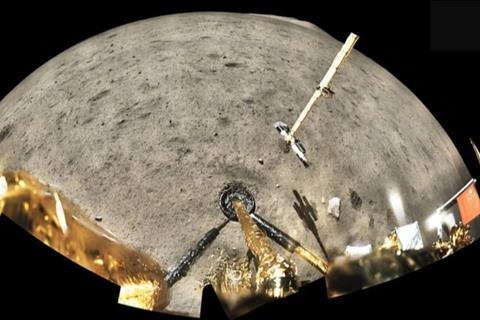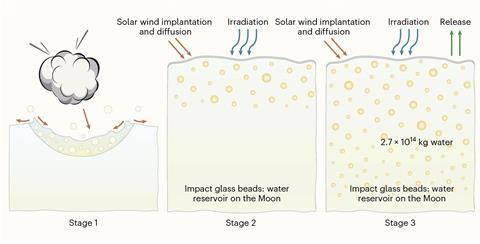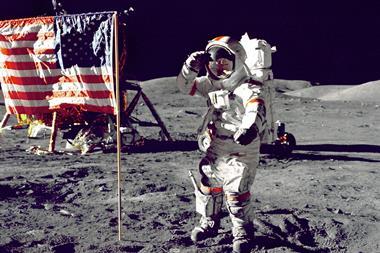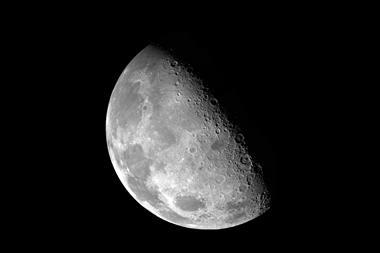A new reservoir of water has been discovered on the surface of the moon hosted within beads of glass in lunar soil. This water was most likely formed by the solar wind, with the glass beads thought to be storing billions of tonnes of water. This discovery has important implications for a water cycle on the moon and the existence of water on other objects in the solar system.
The new study analyses glass beads extracted from lunar soil samples collected by the Chang’e 5 mission. Chang’e 5 was the Chinese Lunar Explorations Program’s fifth lunar mission and the first to return samples.

The team discovered that the glass beads formed when the energy from meteoroids hitting the moon melted and ejected material from the surface. This material cooled rapidly to form glass beads which then fell back to the surface where they were subject to the solar wind – a stream of highly energetic, charged particles released by the sun. The hydrogen within the solar wind is thought to have combined with oxygen in the glass beads to slowly form water. The team found the chemical profiles of the beads showed high water abundances at the rims and low abundances in the cores, associated with very low deuterium–hydrogen ratios at the rims. ‘This indicates that the source of the hydrogen in the beads is diffusion from the outside in of hydrogen delivered by solar wind,’ explains study author Romain Tartese from the University of Manchester, UK.
Despite the large uncertainties, the authors estimate that lunar soils hold at least 270 billion tonnes of water, comparable to the amount of water held in over 100 million Olympic-sized swimming pools. This is thought to be enough to drive an active water cycle on the moon.

Jeremy Boyce, a planetary scientist based at Nasa’s Johnson Space Center, US, who was not involved in the study says: ‘This is the first time solar wind has ever been identified at such high concentrations. If the timescales proposed are correct, then that requires that the hydrogen record of glass beads can change during our lifetimes, which is exciting but daunting from the perspective of trying to understand the history of lunar volatiles.’
This study helps to explain the origin and distribution of lunar surface water, with the new discovery consistent with the remote detection of water at lower-latitude regions of the moon. It suggests that water held in glass beads is what accounts for these observations.
The presence of this water could also aid future exploration of the moon if a way can be found to gather it for human use. And the findings could more widely apply to other airless solar system objects, where we might now expect water to be present. Furthermore, Tartese adds that the implications for further scientific discoveries are compelling, ‘we could use these beads to decipher the composition of the solar wind, which we still don’t know for some key elements like carbon, for example’.
‘First and foremost this work is a not-too-subtle reminder that the moon still has secrets,’ says Boyce. ‘Further exploration is required if we want to have a better understanding of how the moon formed and evolved.’












No comments yet